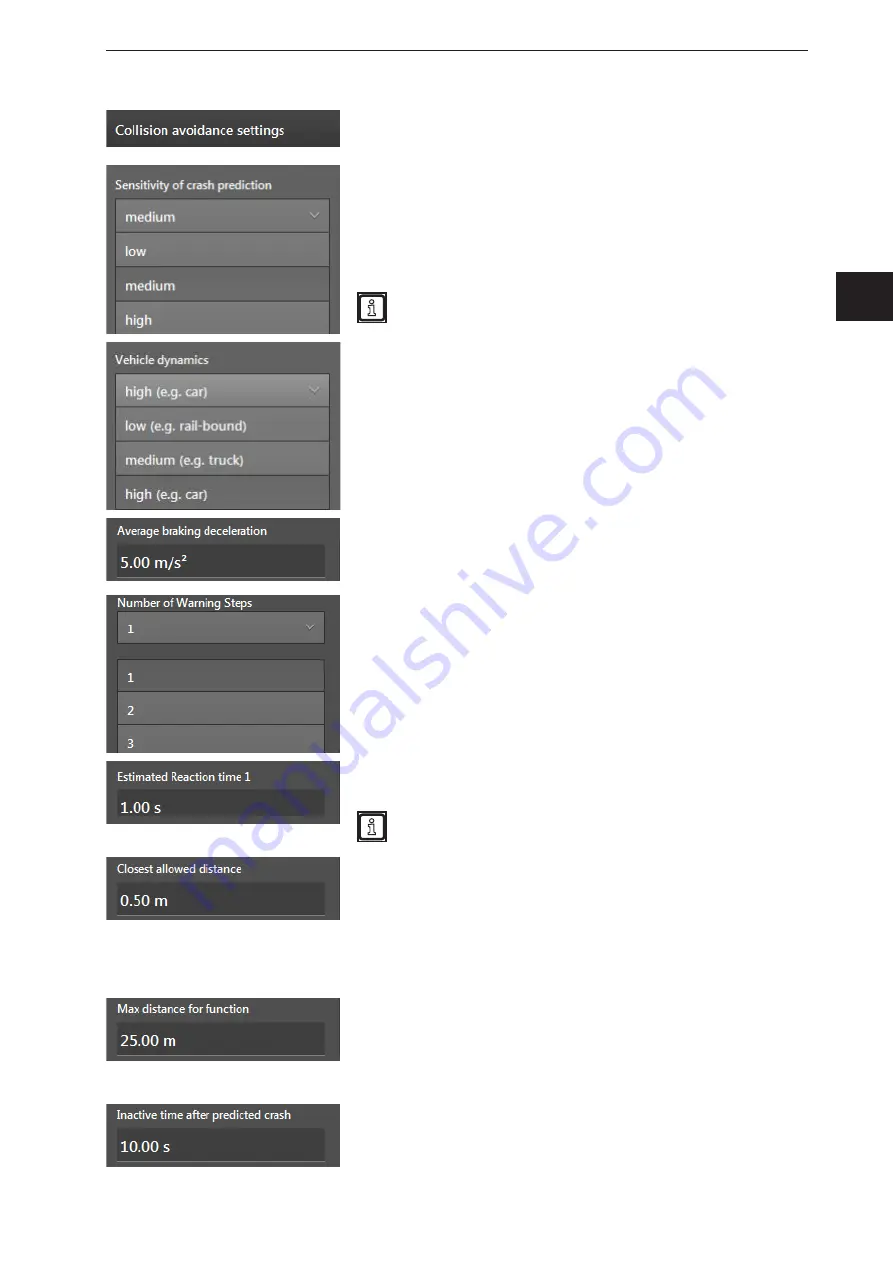
123
ifm Vision Assistant O3M
UK
With the "Collision avoidance settings", the collision avoidance
can be set . The reliability of the collision avoidance increases if the
settings correspond with the properties of the vehicle .
The "Sensitivity of crash prediction" indicates how sensitive the
reactions of the collision avoidance are supposed to be .
●
[Low]: minimum detection .
●
[medium]: medium detection .
●
[high]: maximum detection .
The sensitivity depends on the application . Use [medium]
sensitivity by preference .
With the "Vehicle dynamics" the dynamics of the vehicle can be
set .
●
[low (e .g . rail-bound)]: The vehicle has low dynamics . Vehicles
with low dynamics usually drive long curves .
●
[medium (e .g . truck)]: The vehicle (HGV) has medium
dynamics .
●
[high (e .g . car)]: The vehicle has high dynamics .
With "average braking deceleration" you can set how well the
vehicle brakes . The setting is different for each vehicle type: Car
approx . 10 m/s², HGV approx . 5 m/s² .
With "number of warning steps", the number of response times to
be expected is increased to up to 3 .
Selecting more than one response time enables graded response .
For example, an acoustic warning is triggered with "estimated
response time 1" = "10 s" . The "estimated response time 2" =
"2 s" then actuates automatic braking if the vehicle driver does not
respond .
With "estimated response time 1", the sum of the driver's response
time and the deceleration of the vehicle can be set .
Automatic brakes have a short response time .
The zone in which collisions in front of the vehicle are recognised
adjusts itself dynamically to the speed and driving direction of the
vehicle . In case of very low speeds, it is recommended to use
"closest allowed distance" (minimum distance) to set an area in
front of the device . In this zone from the device up to "closest
allowed distance" (minimum distance), collisions are always
recognised since this zone is independent from the speed and the
driving direction of the vehicle .
The zone in which collisions in front of the vehicle are recognised
adjusts itself dynamically to the speed and driving direction of the
vehicle . In case of very high speeds, it is recommended to use
"max distance for function" to set a maximum distance in front of
the device . After that, collisions are only detected up to the "max
distance for function" .
With "inactive time after predicted crash", you can set a waiting
time which begins after a recognised collision . Within the set time,
no collisions are recognised . Further collisions are only recognised
after the time is elapsed .






























